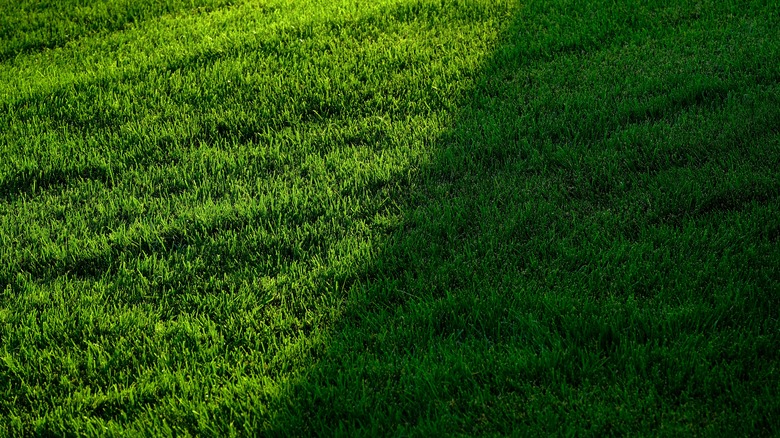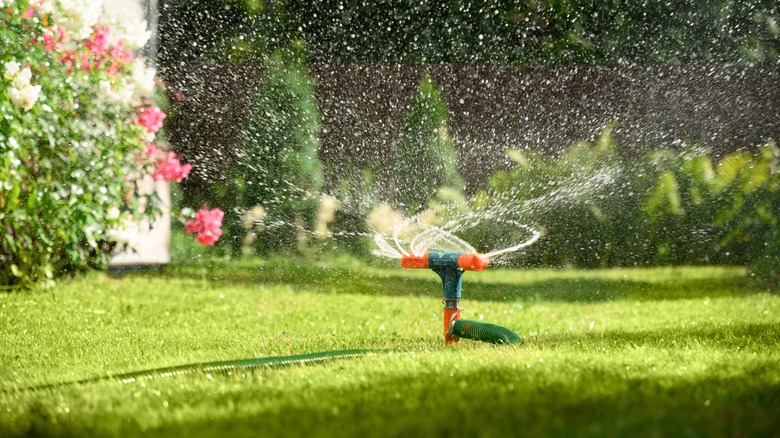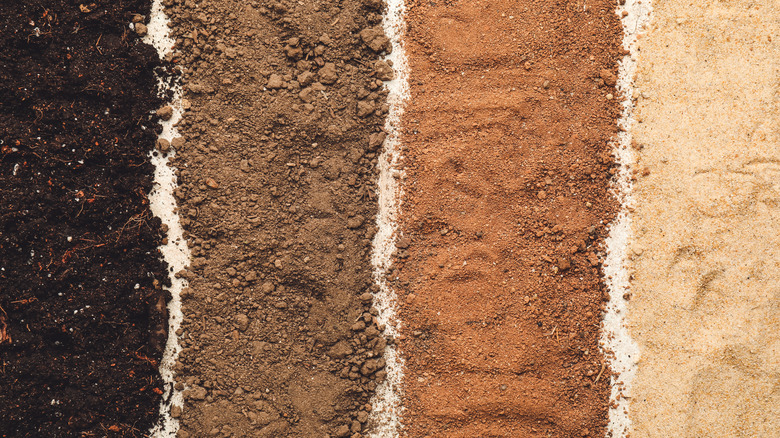Does Grass In The Shade Need To Be Watered Differently?
Maintaining a luscious, healthy lawn is something all homeowners strive to achieve. From fertilizing to aerating, many go to all different lengths to grow their grass to be the greenest in the neighborhood. However, many make the common mistake of overlooking the different needs of shaded grass versus sun-soaked. While they may be part of the same lawn and made up of the same grass species, these two sections need completely different amounts of water.
Less moisture is soaked up by the sun in shaded areas, allowing it to travel farther into the soil and the roots. Because of this, shaded grass needs to be watered less frequently than grass that receives sun throughout the majority of the day. That is, however, unless a tree shades the grass. If that's the case, because the nearby tree roots soak up an overwhelming amount of water, the grass should be watered as frequently as grass in sunny conditions.
Customize your lawn care
Many homeowners rely on automatic sprinkler systems and occasional rainwater to water their lawns. Both are great ways to get even saturation. However, different environments within the same property require different amounts and frequencies of watering, which cannot be achieved through these common methods.
To give the shaded and sun-soaked areas of your lawn the proper amounts of water, you must individualize your approach. The best way to do this is by setting up a sprinkler attached to your garden hose and placing it in the middle of your lawn in the sun. Make sure that it covers the entire space but does not distribute water in areas shaded by structures such as sheds or homes. You can water that area by hand since it doesn't need as much hydration. However, if trees shade a patch, allow the sprinkler to reach that area to provide enough water for both the grass and tree roots. This focalized method allows you to customize your lawn care easily and efficiently.
Other watering factors
While the amount of shade a lawn receives throughout the day is a key factor in how much and how frequently you should water your grass, it isn't the only one. Different soil types retain water differently. Loamy soil has good drainage and a variety of particles, while clay soil is more compact with more water retention. However, sandy soil is loose with a high amount of drainage. Soils with higher drainage means they don't retain water for as long and require more watering than more dense soils.
Grasses most suitable for shaded patches are Ryegrass and Fine and Tall Fescues in cool-season regions, and Zoysia grass and St. Augustine grass in warm-season areas. Fortunately, when it comes to these common grasses, the type of grass that makes up your lawn is relatively insubstantial when customizing its watering schedule. All four do extremely well with a standard, ½ inch watering twice-a-week schedule.


